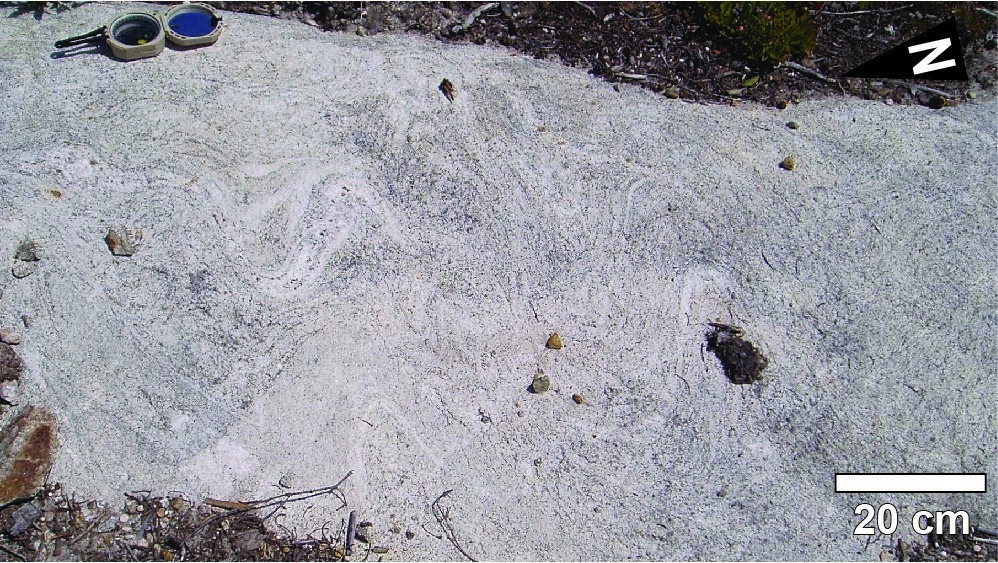
| Author: | Hébert, 1980 |
| Age: | Neoarchean |
| Reference section: | None |
| Type area: | La Dauversière Lake, southwest portion of NTS sheet 32G09 |
| Geological province: | Superior Province |
| Geological subdivision: | Abitibi Subprovince |
| Lithology: | Tonalite, granodiorite |
| Type: | Lithodemic |
| Rank: | Lithodeme |
| Status: | Formal |
| Use: | Active |
None
Background
The intrusion was first named the “La Dauversière Stock” by Hébert (1980), then the “La Dauversière Batholith” or “La Dauversière Pluton” by subsequent authors (Racicot et al., 1984; Daigneault, 1991; Roy et al., 2005).
Description
The inner part of the pluton consists of tonalite (≤10% biotite) that gradually evolves into granodiorite towards the core of the intrusion (Racicot et al., 1984). The La Dauversière Pluton is characterized by an intensively deformed edge zone, where tonalite develops a blastomylonitic texture and includes enclaves of Obatogamau Formation mafic volcanic rocks. The contact metamorphism aureole is up to 450 m thick (Hébert, 1979). Regionally, the La Dauversière Pluton is cut by several NNE-SSW faults related to the Grenvilian deformation (Hébert, 1979; Roy et al., 2005).
Thickness and Distribution
The La Dauversière Pluton is a 15-km-diameter subcircular intrusion located along the La Dauversière Anticline’s axial trace (Daigneault and Allard, 1990).
Dating
Sample LDP-1 returned a crystallization age of 2719.8 +3.0/-0.6 Ma (Mortensen, 1993).
| Isotopic System | Mineral | Crystallization Age (Ma) | (+) | (-) | Reference(s) |
| U-Pb | Zircon | 2719.8 | 3.0 | 0.6 | Mortensen, 1993 |
Stratigraphic Relationship(s)
The La Dauversière Pluton cuts mafic volcanic rocks of the Obatogamau Formation. It is cut by the NNE-SSW-oriented Chef Dykes (2408 ±3 Ma; Ciborowski et al., 2014).
Paleontology
Does not apply.


